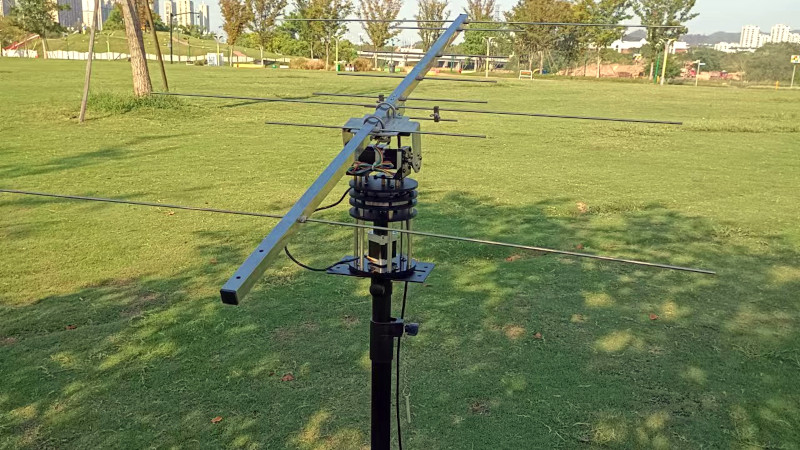It stands to reason, that should you wish to communicate with a satellite, whatever antenna you use should point at that satellite. Some of us have done this by hand, following the bright dot of the space station in the night sky. Still, for anything more serious than trying to catch a fleeting SSTV image, a more robust solution is called for. In other words, a motorized antenna rotator, and AntRunner from [Wuxx] is just the ticket. Better still, it’s portable for those /p operating sessions off the beaten track.
The rotator itself is an az-el design with a couple of geared stepper motors. The full mechanism design has been published, but it shouldn’t be too difficult to copy. The interesting part is the controller and software, which can work with Gpredict, Hamlib, and SDR for automated satellite tracking. The controller is as straightforward as an ESP32 running the ESP port of GRBL.
So here’s a portable antenna rotator that’s accessible and widely supported, what’s not to like? As you might expect though, it’s not the first we’ve seen. In fact, the 2014 Hackaday Prize was won by SatNOGs, which includes a 3D printed antenna positioner.
Thanks [Abe Tusk] for the tip!
















I made one of these about 10 years ago. It used two servos and was powered by 4xAA batteries. It was controlled by an Arduino with a Bluetooth interface, and responded to gpredict over a BT serial link.
I ought to write about it I suppose.
Please do. Would love to build one.
I don’t see a way to control polarity which is important for satellite work.
Did you mean to say “polarization?” If not, what did you mean by “polarity?”
Yes sorry I used the wrong word. Polarization is correct. I’ve worked satellites with hand-held antennas (yagi-style) and I have to keep rotating the antenna to make sure I’m getting into it.
just use a circular polarized antenna. turnstile for example.
That would work, but it’s not the antenna shown in the picture. That picture is what I based my comment on.
“The full mechanism design has been published..”
It has?
I have hunted and cannot find it? no reference on the github or wikki pages eitrher?
Can someone please post a link to the hardware BOM /Assy
Thanks
Looks like an MFJ product of similar construction and purpose. Of course, form follows function and half the fun is in building the thing.
My favorite for receiving VHF/UHF satellite is the quadrifiliar helix. It maintains polarization(important for satellite), and is omnidirectional(they usually move fairly fast). And it grabs the eye, starts a lot of conversations on Field Day. Sure, it’s not as high-gain as a Yagi like the article describes, but it doesn’t need tracking. Handy for the weather APT reception, if they are still around.
For transmitting, well, there is actually a reason to limit ERP going to a satellite, and that is the linear transponder found in many AMSAT designs. They have energy and bandwidth budgets. Even 5W will do with most LEO birds. There is little atmospheric attenuation as long as there is LOS in VHF/UHF. I remember, back when they still were active on the radio with anybody, communicating with the ISS from an HT standing beside my car in a field, 5×5.
yes, they are still around. NOAA 15 is still blasting apt, along with 18 and 19. Russians have the Meteor which is LRPT. Better resolution, same bandwidth. trivial to receive with cheap SDRs. plenty of automated stations that tweet the APT images. mine has been up for over 3 years. also built a motorized HRPT receiver but the software is lacking. nothing as easy to use as the abandoned wxtoimg.
Beautiful. But I guess it is not suitable for fixed installations, as it does not seem to withstand rain or long term outdoor exposure.
I believe most HAMs, as I did, enter the LEO satellite hobby using the ancient, ever-present Armstrong positioner. I use my az-el positioner for EME stuff. As someone noted, a good portion of the fun comes from building.